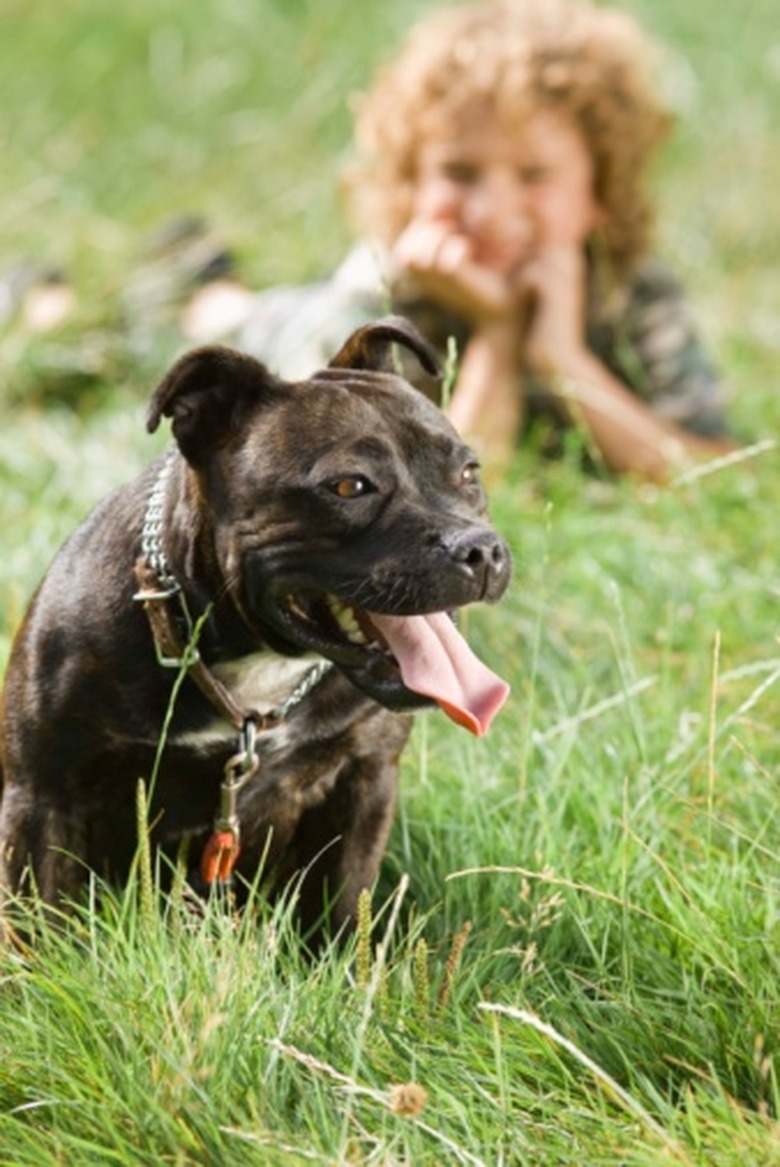Facts About Inbred Pitbulls
Inbreeding — the practice of breeding closely related family members to each other — is a method that has been practiced for centuries as it is thought to concentrate the best genetics of the family line into each litter of puppies. It isn't without consequences, however, and has recently become more and more frowned upon, which is especially the case with pit bulls, a dog that human irresponsibility has given a persistently bad reputation.
Why It's Done
Why It's Done
When breeding any type of dog, there are several terms that are often thrown around. Inbreeding is the practice of breeding very closely related dogs in an attempt to bring out the best qualities in the offspring, which means encouraging mating pairs that are brother and sister or parents to children. Line breeding is another type of inbreeding, in which dogs with a common relative are bred — such as grandparents to their grandchildren or nieces and nephews to their aunts and uncles.
When breeding pit bulls, these are dogs that are often bred with a very specific ideal in mind. The desirable — and most expensive — pit bulls are those that are heavily muscled, strong and athletic. Dogs are also bred for colors; blue pit bulls are a genetic rarity but a popular color, and some breeders will breed blue siblings to get more blue puppies.
Health Problems
Health Problems
While some breeders decide to get their puppies by practices of inbreeding to enhance the desirable traits in the dog, this also has the chance of magnifying health issues as well. As a breed, pit bulls are very susceptible to developing a condition known as hip displasia. This degenerative disease begins to manifest itself when the dog is as young as four months and results in extreme pain, lameness, weakness and arthritis. An inherited disease, breeding pit bulls with siblings can increase the chances that the offspring will inherit the genetic makeup and bone structure that will result in this debilitating disease. Similarly, other genetic conditions that the pit bull is susceptible to can be magnified by inbreeding, including the development of hereditary cataracts, skin conditions, heart disease and allergies.
Mental Stability
Mental Stability
A mental element is also inherent to the dangers of inbreeding pit bulls. Healthy, well-adjusted and well-bred pit bulls are known for being eager to please and devoted to their owners and families as well as being friendly but protective of their families if they are aware something is wrong. Dogs that have been inbred show few of these traits, and mental illness is common in puppies with closely related parents. These inbred dogs are difficult to train and are potentially dangerous; unfortunately these traits often come out after they have been purchased from a breeder and taken home. A genetic defect that results in mental illness also has the tendency to skip a few generations, so if a puppy with the condition is bred, it may become much more severe several generations later.
Consequences
Consequences
After years of being raised as a fighting dog and after countless news stories vilifying the pit bull, they have earned the designation of being one of the most feared of the bully breeds. In many areas, owning a pit bull is illegal because of this image that has been created by years of irresponsible breeding and ownership. Breed specific laws are created to manage a perceived threat that comes from a particular breed of dog, and often these include pit bulls. Inbreeding dogs can create puppies that are destined for a lifetime of pain, and dogs that are in pain are more likely to snap or bite. The breeding of unstable dogs also does nothing but result in more incidents and increased fear of a breed that, when bred correctly, can be a loving family pet.
